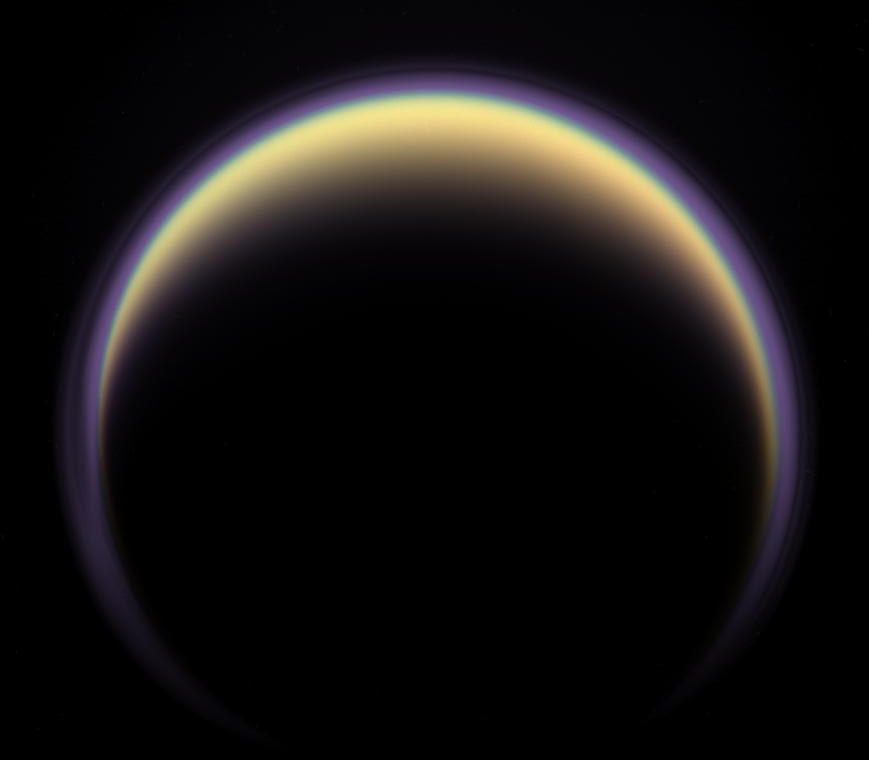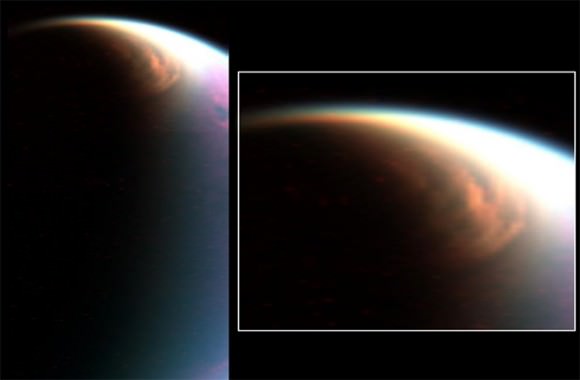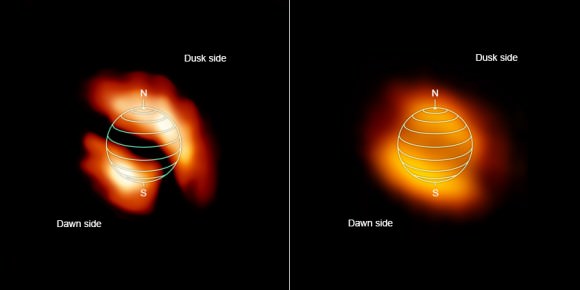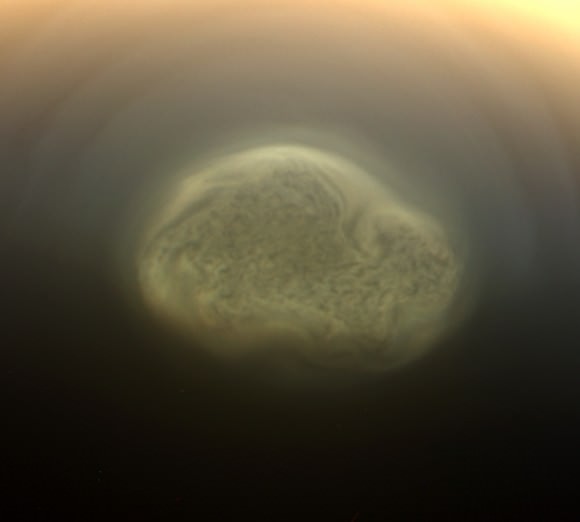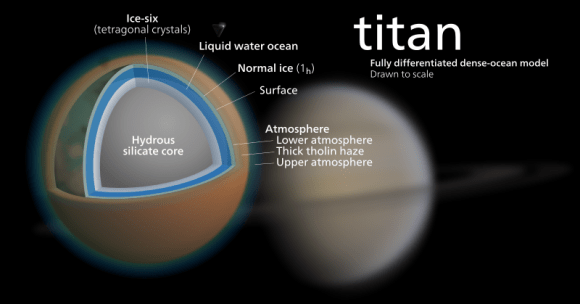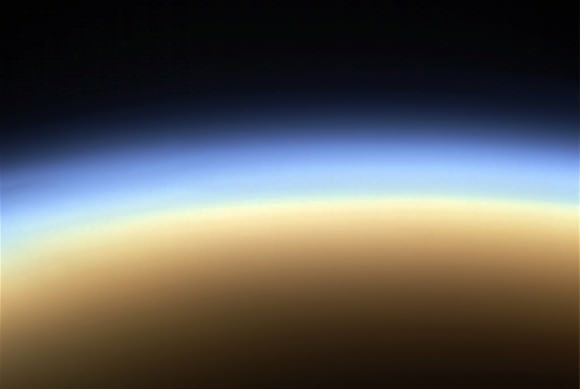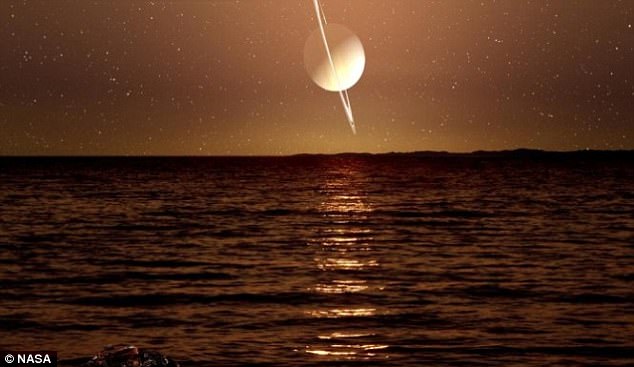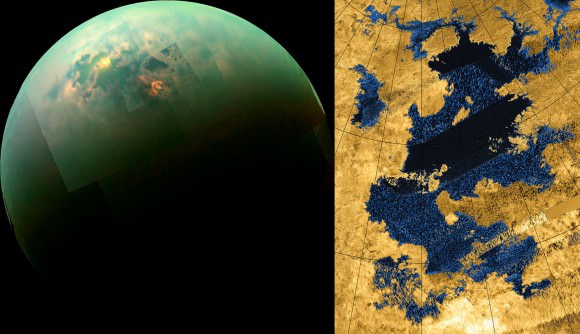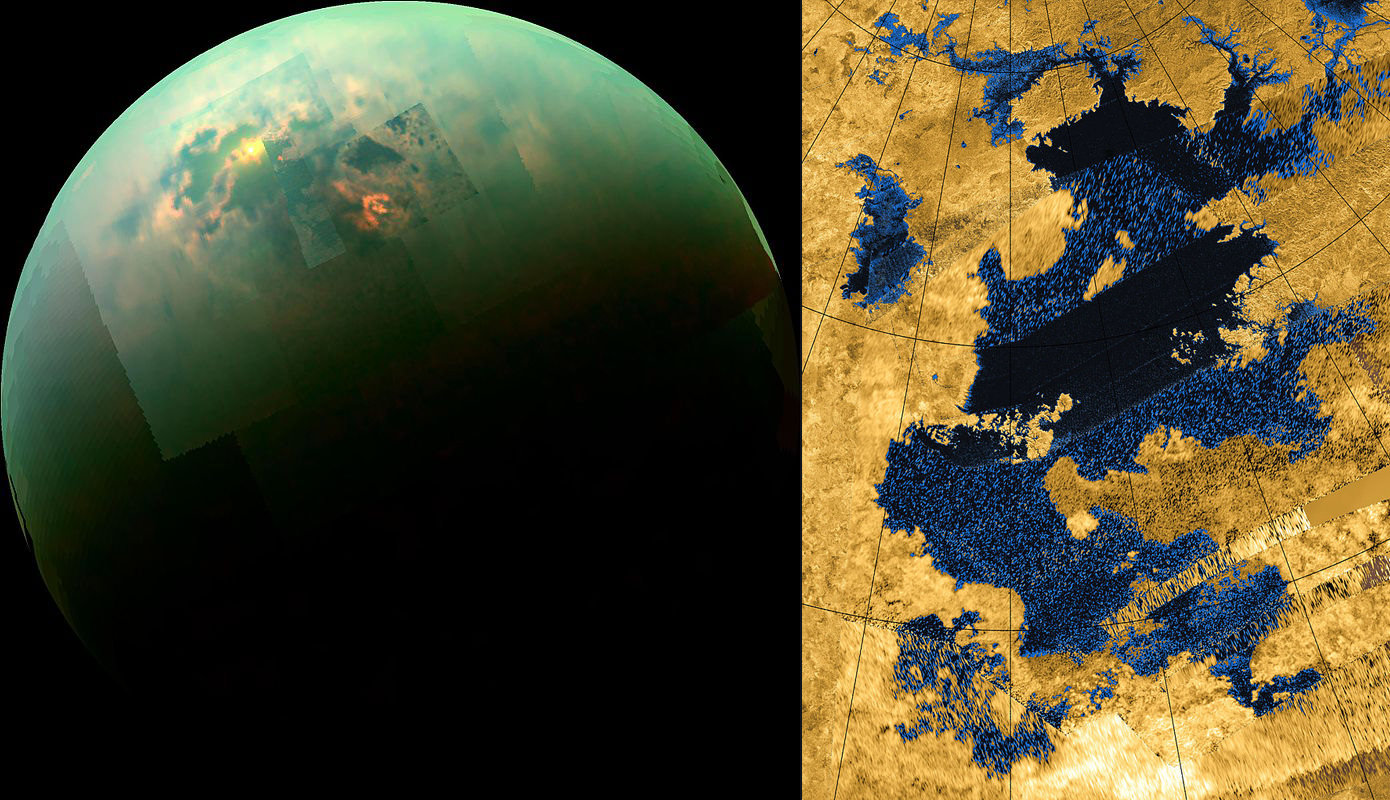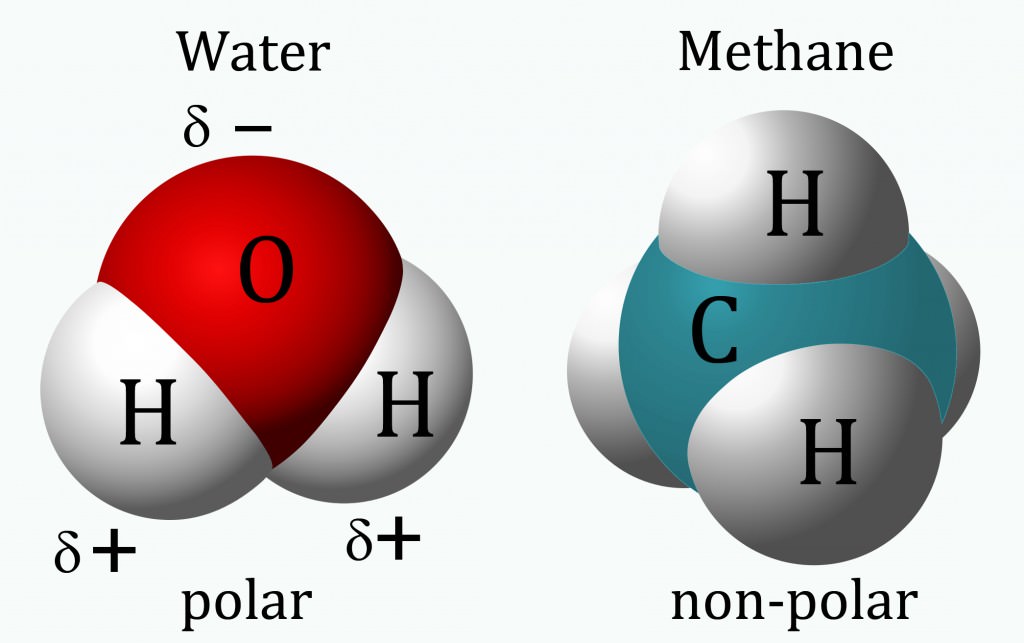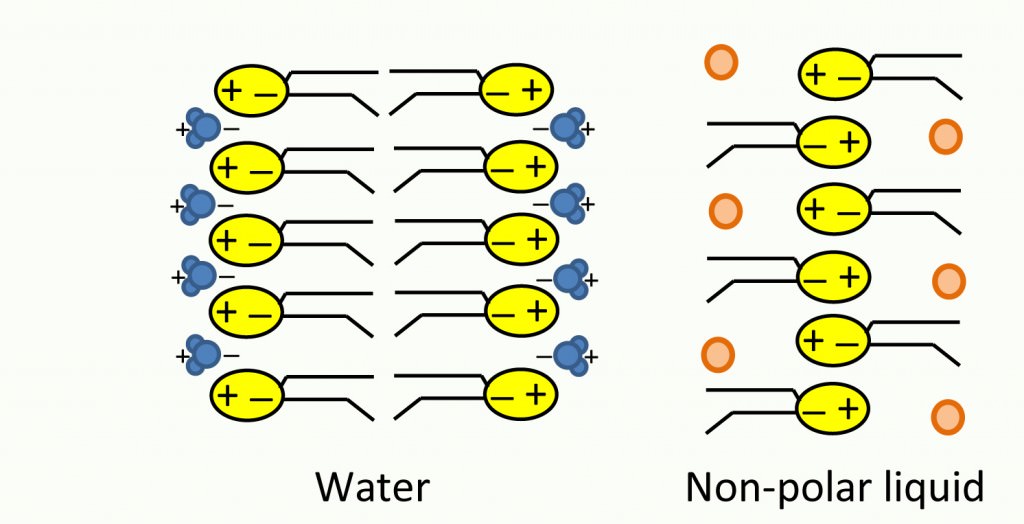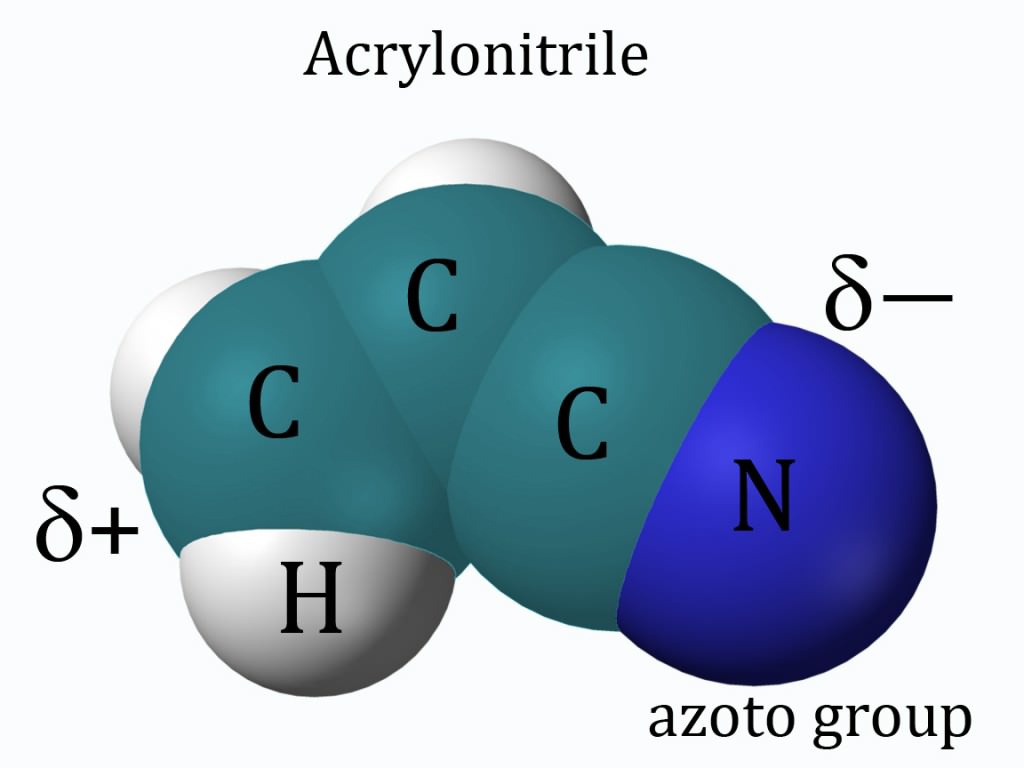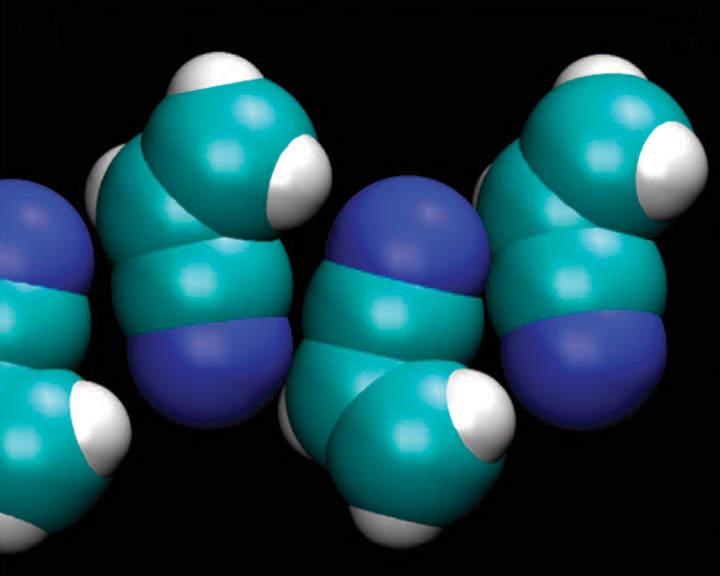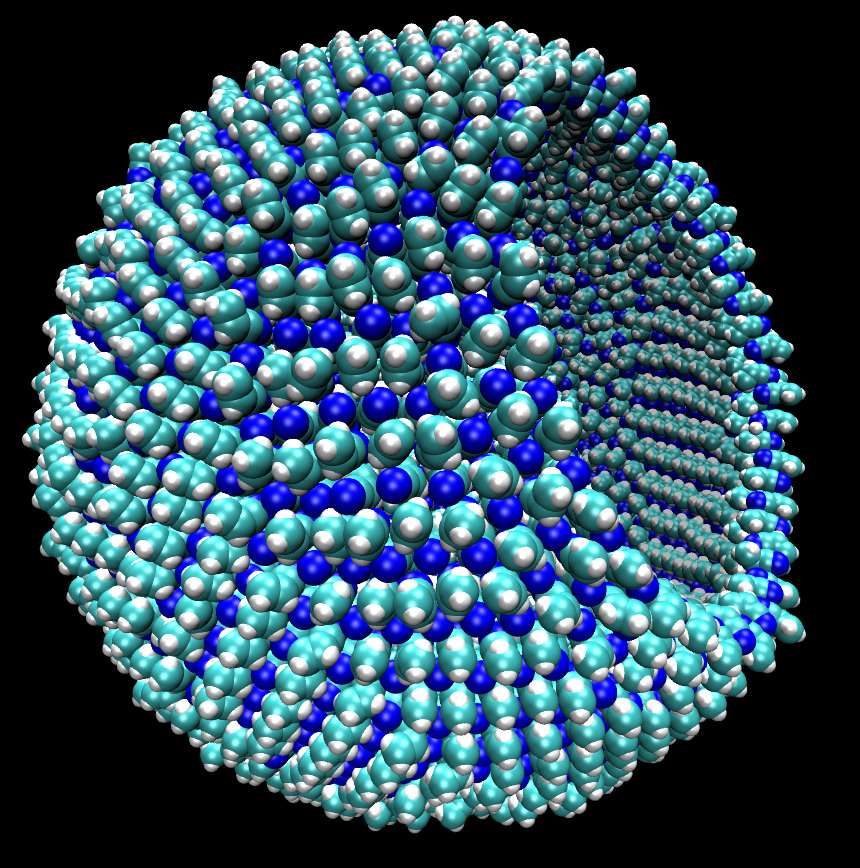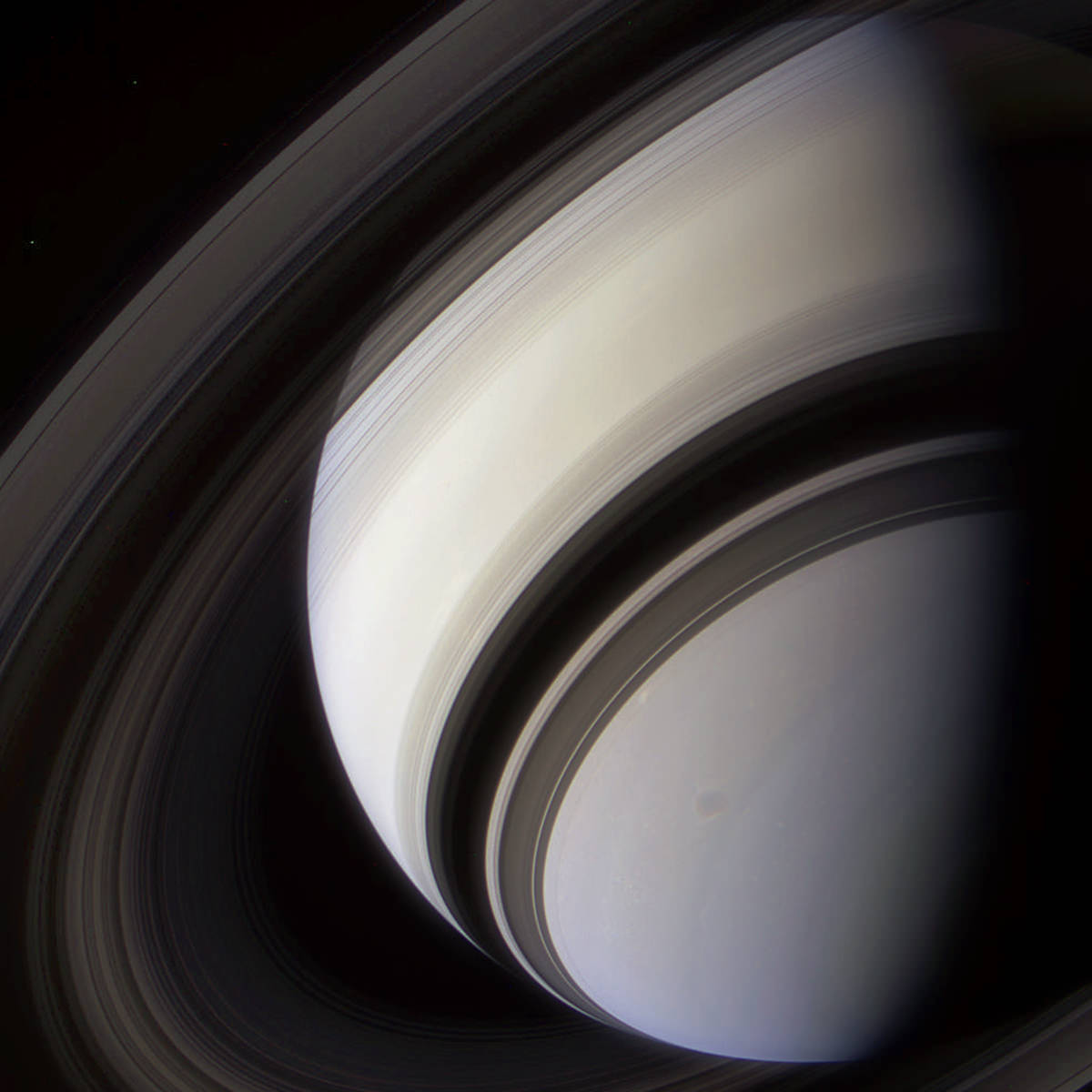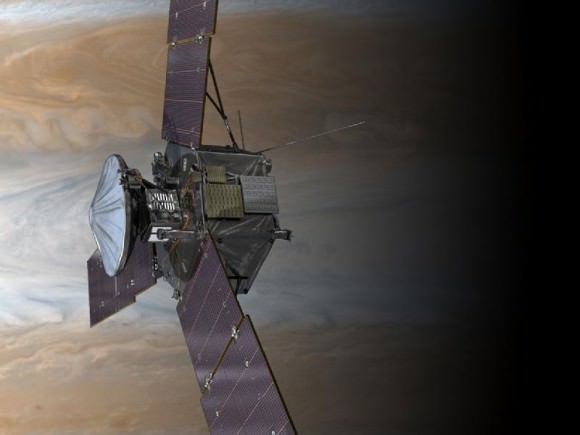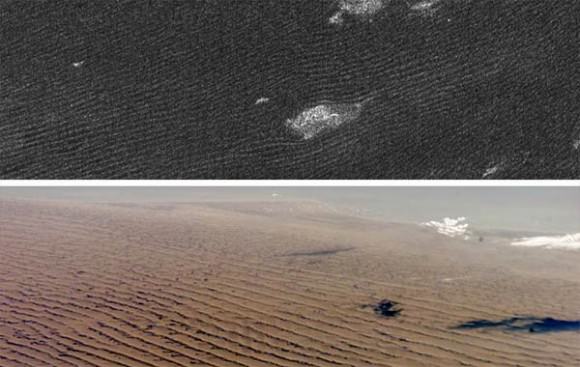Last week – from Monday, February 27th to Wednesday, March 1st – NASA hosted the “Planetary Science Vision 2050 Workshop” at their headquarters in Washington, DC. In the course of the many presentations, speeches and panel discussions, NASA’s shared its many plans for the future of space exploration with the international community.
Among the more ambitious of these was a proposal to explore Titan using an aerial explorer and a lander. Building upon the success of the ESA’s Cassini-Huygen mission, this plan would involve a balloon that would explore Titan’s surface from low altitude, along with a Mars Pathfinder-style mission that would explore the surface.
Ultimately, the goal a mission to Titan would be to explore the rich organic chemical environment the moon has, which presents a unique opportunity for planetary researchers. For some time, scientists have understood that Titan’s surface and atmosphere have an abundance of organic compounds and all the prebiotic chemistry necessary for life to function.
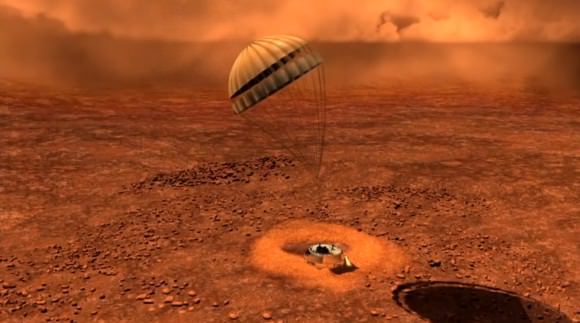
The presentation, which was titled “Aerial Mobility : The Key to Exploring Titan’s Rich Chemical Diversity” was chaired by Ralph Lorenz from the Johns Hopkins Applied Physics Laboratory, and co-chaired by Elizabeth Turtle (also from John Hopkins APL) and Jason Barnes from the Dept. of Physics at the University of Idaho. As Turtle explained to Universe Today via email, Titan presents some exciting opportunities for a next-generation mission:
“Titan’s of particular interest because the abundant and complex organic chemistry can teach us about chemical interactions that could have occurred here on Earth (and elsewhere?) leading to the development of life. Furthermore, not only does Titan have an interior liquid-water ocean, but there will also have been opportunities for organic material to have mixed with liquid water at Titan’s surface, for example impact craters and possibly cryovolcanic eruptions. The combination of organic material with liquid water, of course, increases astrobiological potential.”
For this reason, the exploration of Titan has been a scientific goal for decades. The only question is how best to go about exploring Titan’s unique environment. During previous Decadal Surveys – such as the Campaign Strategy Working Group (CSWG) on Prebiotic Chemistry in the Outer Solar System, of which Lorenz was a contributor – has suggested that a mobile aerial vehicle (such as an airship or a balloon) would well-suited to the task.
However, such vehicles would be unable to study Titan’s methane lakes, which are one of the most exciting draws of the moon as far as research into prebiotic chemistry goes. What’s more, an aerial vehicle would not be able to conduct in-situ chemical analysis of the surface, much like what the Mars Exploration Rovers (Spirit, Opportunity and Curiosity) have been doing on Mars – and with immense results!
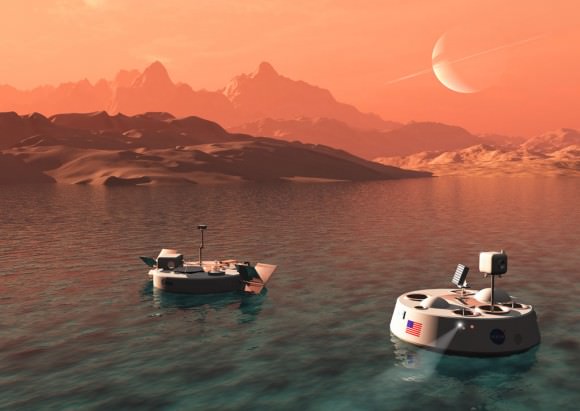
At the same time, Lorenz and his colleagues examined concepts for the exploration of Titan’s hydrocarbon seas – like the proposed Titan Mare Explorer (TiME) capsule. As one of several finalists of NASA’s 2010 Discovery competition, this concept called for the deployment of nautical robot to Titan in the coming decades, where it would study its methane lakes to learn more about the methane cycle and search for signs of organic life.
While such a proposal would be cost-effective and presents some very exciting opportunities for research, it also has some limitations. For instance, during the 2020s-2030s, Titan’s northern hemisphere will be experiencing its winter season; at which point the thickness of its atmosphere will make direct-to-Earth communications and Earth views impossible. On top of that, a nautical vehicle would preclude the exploration of Titan’s land surfaces.
These offer some of the most likely prospects for studying Titan’s advanced chemical evolution, including Titan’s dune sands. As a windswept region, this area likely has material deposited from all over Titan and may also contain aqueously altered materials. Much as the Mars Pathfinder landing site was selected so it could collect samples from a wide area, such as location would be an ideal site for a lander.
As such, Lorenz and his colleagues advocated the type of mission that was articulated in the 2007 Flagship Study, which called for a Montgolfière balloon for regional exploration and a Pathfinder-like lander. This would provide the opportunity to conduct surface imaging at resolutions that are impossible from orbit (due to the thick atmosphere) as well as investigating the surface chemistry and interior structure of the moon.
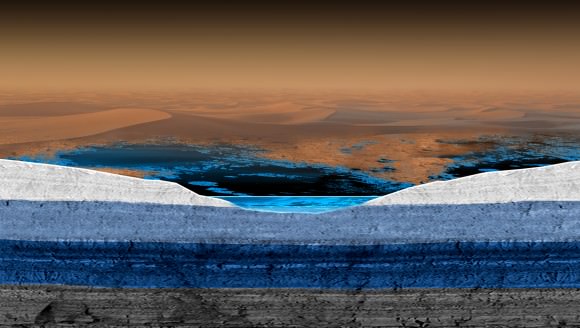
So while the balloon would gather high-resolution geographical data of the moon, the lander could conduct seismological surveys that would characterize the thickness of the ice above Titan’s internal water ocean. However, a lander mission would be limited in terms of range, and the surface of Titan presents problems for mobility. This would make multiple landers, or a relocatable lander, the most desired option.
“Potential targets include areas where we can measure solid surface materials, the composition of which is still not well known, Titan’s dune sands, for example,” said Turtle. “Detailed in situ analysis is required to determine their composition. The lakes and seas are also intriguing; however, in the nearer term (missions arriving in the 2030s) most of those will be in winter darkness. So, exploring them would likely have to wait until the 2040s.”
This mission concept would also take advantage of several technological advances that have been made in recent years. As Lorenz explained in the course of the presentation:
“Heavier-than-air mobility at Titan is in fact highly efficient, moreover, improvements in autonomous aircraft in the two decades since the CSWG make such exploration a realistic prospect. Multiple in-situ landers delivered by an aerial vehicle like an airplane or a lander with aerial mobility to access multiple sites, would provide the most desirable scientific capability, highly relevant to the themes of origins, workings, and life.”

Lorenz, Turtle and Barnes will also be presenting these findings at the upcoming 48th Lunar and Planetary Science Conference – which will be taking place from March 20th to 24th in The Woodlands, Texas. There they will be joined by additional members of the Johns Hopkins APL and the University of Idaho, as well as panelists from NASA’s Goddard Space Flight Center, Pennsylvania State University, and Honeybee Robotics.
However, addressing some additional challenges not raised at the 2050 Vision Workshop, they will be presenting a slight twist on their idea. Instead of a balloon and multiple landers, they will present a mission concept involving a “Dragonfly” qaudcopter. This four-rotor vehicle would be able to take advantage of Titan’s thick atmosphere and low gravity to obtain samples and determine the surface composition in multiple geological settings.
This concept also incorporates a lot of recent advances in technology, which include modern control electronics and advances in commerical unmanned aerial vehicle (UAV) designs. On top of that, a quadcopter would do away with chemically-powered retrorockets and could power-up between flights, giving it a potentially much longer lifespan.
These and other concepts for exploring Saturn’s moon Titan are sure to gain traction in the coming years. Given the many mysteries locked away on this world – with includes abundant water ice, prebiotic chemistry, a methane cycle, and a subsurface ocean that is likely to be a prebiotic environment – it is certainly a popular target for scientific research.


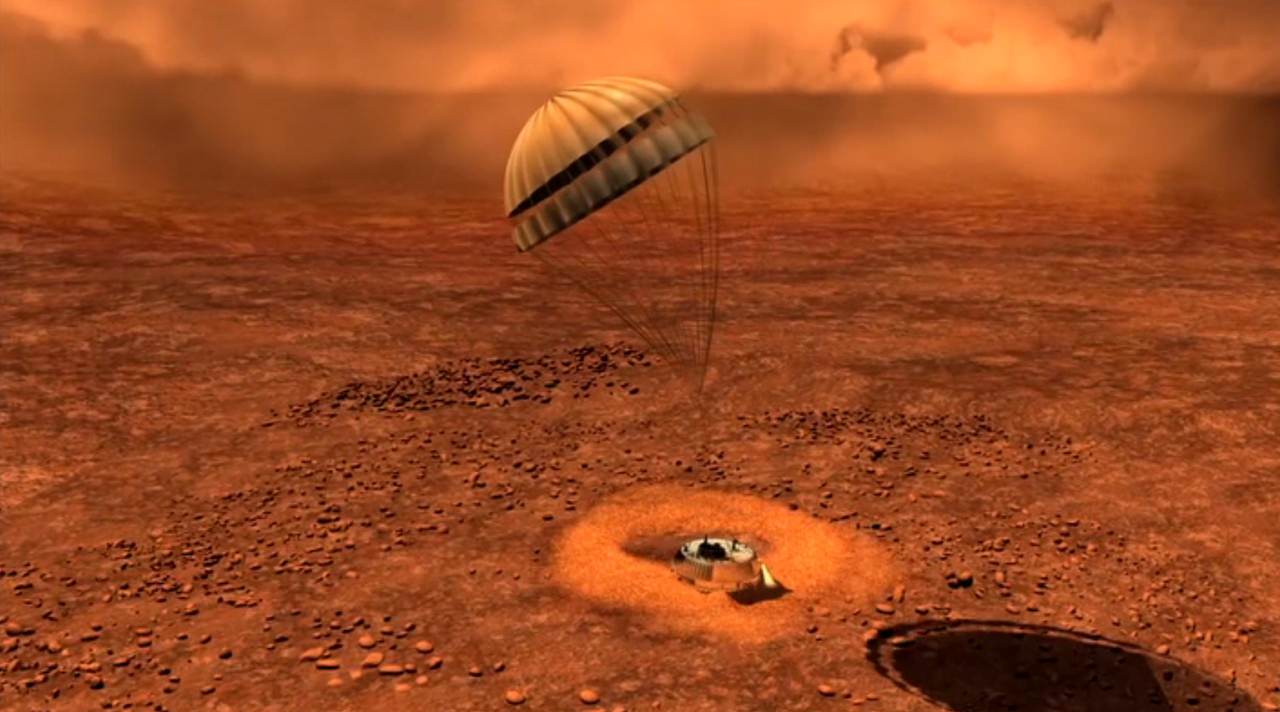
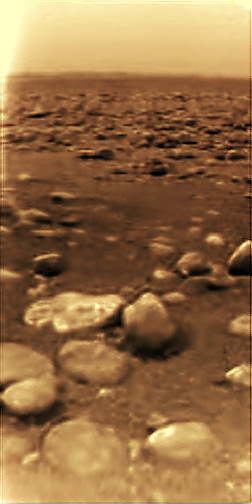

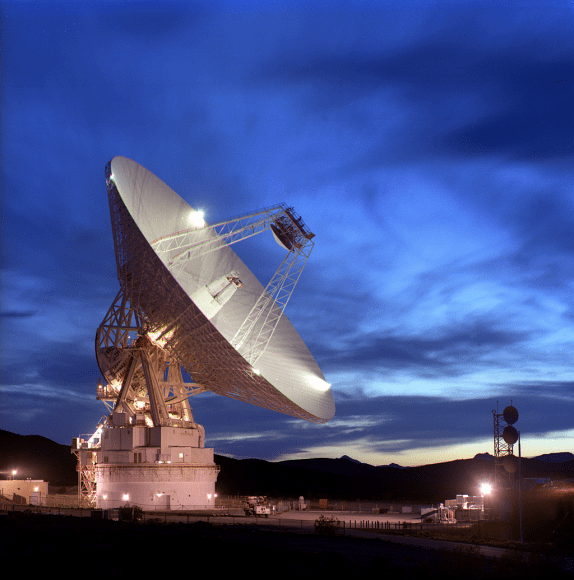
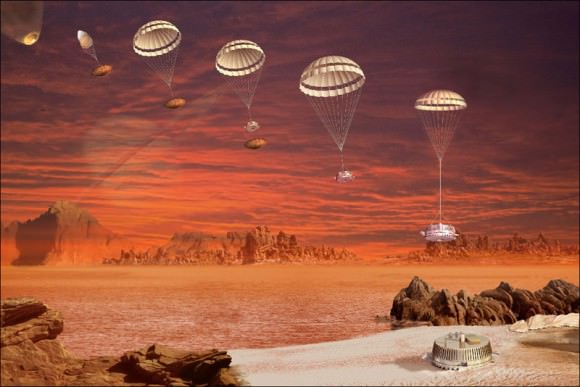
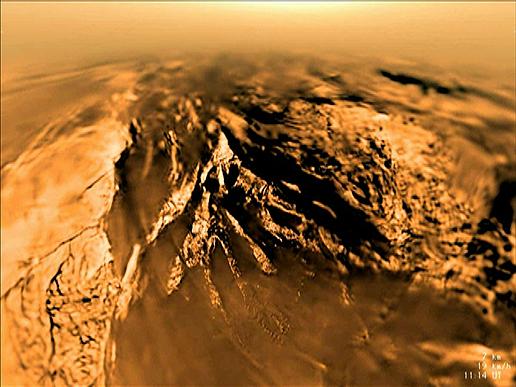
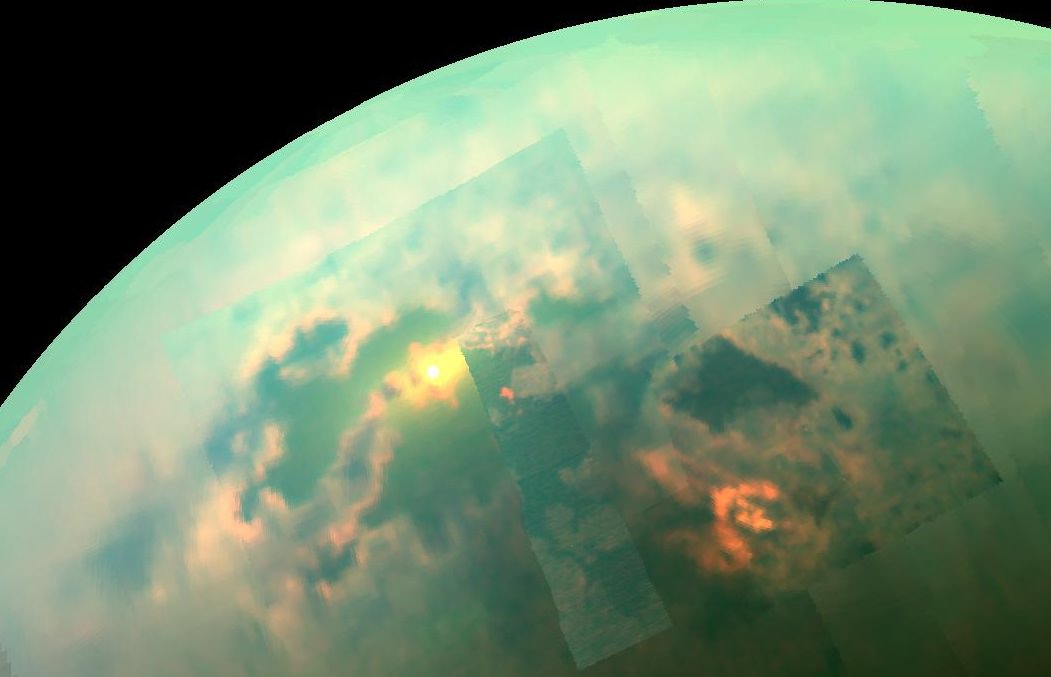
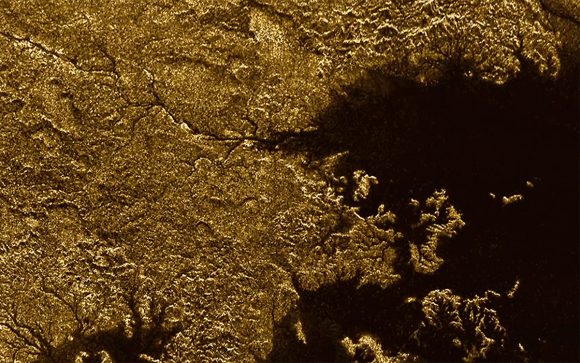
![The northern polar area of Titan and Vid Flumina drainage basin. (left) On top of the image, the Ligeia Mare; in the lower right the North Kraken Mare; the two seas are connected each other by a labyrinth of channels. On the left, near the North pole, the Punga Mare. Red arrows indicate the position of the two flumina significant for this work. At the end of its mission (15 September 2017) the Cassini RADAR in its imaging mode (SAR+ HiSAR) will have covered a total area of 67% of the surface of Titan [Hayes, 2016]. Map credits: R. L. Kirk. (right) Highlighted in yellow are the half-power altimetric footprints within the Vid Flumina drainage basin and the Xanthus Flumen course for which specular reflections occurred. At 1400?km of spacecraft altitude, the Cassini antenna 0.35° central beam produces footprints of about 8.5?km in diameter (diameter of yellow circles). Credit: NASA/JPL](https://www.universetoday.com/wp-content/uploads/2016/11/grl54735-fig-0001-580x282.png)

